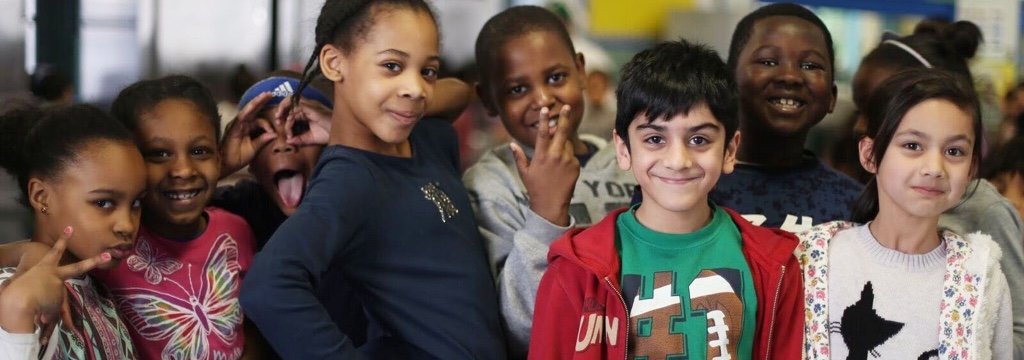Get more from InsideSchools
P.S. 77 Lower Lab School
Share this school
Manhattan NY 10128
Our Insights
What’s Special
Creative and challenging instruction
The Downside
Very early lunch for some students in shared building
Founded in 1987, a time when most Upper East Side public schools were neither well-regarded nor in high demand, PS 77 Lower Lab was modeled after two progressive private schools: Manhattan Country School and Bank Street School for Children. More than two decades later, Lower Lab remains true to its roots, providing creative instruction and lots of group work geared to the needs and interests of its gifted and talented (G&T) student population.
Social studies lessons are the connective tissue of learning at Lower Lab; they are enriched through community partnerships at each grade level. First-graders learn about architecture and design in partnership with the Center for Architecture; 2nd-graders study buildings, bridges and landmarks in their local community with The Salvadori Center; 3rd-graders take a look at different cultures through dance and music at Symphony Space; and 4th-graders work with Wingspan Arts to develop dramatic presentations based on lessons in New York history.
Teachers continually hone math instruction. They draw from several sources including the progressive, hands-on TERC Investigations. For reading and writing lessons, they follow the approach at Teachers College Reading and Writing Project.
Lower Lab encourages participation in clubs and competitions including Math Olympiads for grades 4 and 5, the NYS Math League, the National Science Competition and CML coding (computer science).
A parent said she was surprised at the speed with which her kindergarten-aged son learned to read when he started at Lab. Most kindergartners are reading by December, according to the administration. In general, children work about one-half to one full grade level above their age. "That is still our goal," said parent coordinator Ana Kukaj, even though the school no longer admits children based on test scores, adhering to recent education department guidelines. There is one teacher in every class. Lower grades may have a teaching assistant.
Lab teaches students to debate in conjunction with persuasive writing in 5th grade and an author-in-residence works with 3rd-graders as they learn the art of revision in realistic fiction. All students receive instruction in art, music, chess (kindergarten), and Latin (grades 1-5).
All students meet two to three times a week for science in a classroom lab filled with a scientifically labeled collection of live pill bugs, earthworms and hornworms.
Fifth-graders have a modified school schedule in part to get ready for middle school. They receive math and science instruction from one teacher and English and social studies from another. Small group advisories help students manage the middle school-level intensity of their studies, and to juggle expectations from two teachers. Math lessons are rooted in problem-solving activities as a group.
Lower Lab shares a building with PS 198, which serves a more ethnically diverse student body. The schools have worked to build friendly cooperation in the building. Students from both schools serve on a joint student council, and some years the schools' PTAs sponsor a joint fundraiser.
Lower Lab's classrooms are clustered on a couple of floors, on one side of the building, but there is no section or hallway reserved exclusively for the school. The schools share the gymnasium, cafeteria and recess yard. Perhaps the largest inconvenience to Lower Lab is the fact that 2nd-graders must eat lunch (or "brunch" as they call it) at 10:00 am.
There are several after-school options. The Beacon Program sponsors daily activities onsite for both schools. Lower Lab also offers chess, music, and sports activities. Some families choose the wide selection of after-school programs at the 92nd Street Y. Children are picked up at school and walk to the Y with an adult chaperone.
SPECIAL EDUCATION: The very few children with special needs are incorporated into general education classrooms and receive services, such as speech, as needed, and there is a special education teacher.
ADMISSIONS: Priority to District 2 residents. Twelve percent of kindergarten seats go to applicants based on family income. Very few spots have opened up in grades 1-3 in recent years. (Lydie Raschka, Interview and web reports, July 2022)
Read more
School Stats
Is this school safe and well-run?
From the 2024-2025 NYC School Survey
From this school's most recent Quality Review Report
From the 2023-24 School Quality Report
How do students perform academically?
From the New York State 2023-2024 Assessment Database
Who does this school serve?
From the 2024-25 Demographic Snapshot
From the 2023-24 School Quality Guide
How does this school serve special populations?
From the New York State 2023-2024 Assessment Database
Contact & Location
Location
Contact
Other Details
Was this information helpful?
Get more from InsideSchools
You may also like …
Hunter College Elementary School
New York, NY 10128
PS 151 Yorkville Community School
Manhattan, NY 10128

Comments